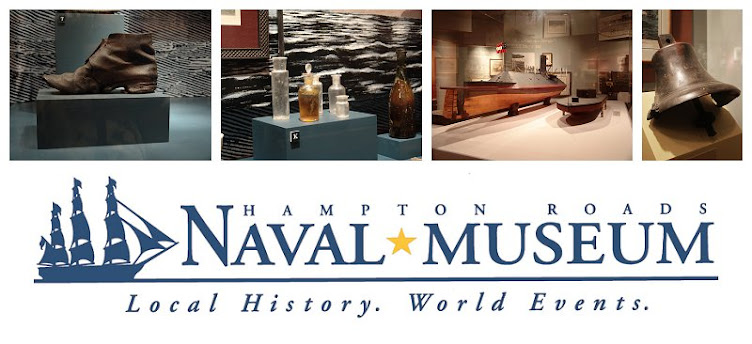 |
| Boatswain's Mate 1st Class Jim Hornshaw (right at front) is seen here in USS Wisconsin's First Class Mess during the Korean War. Before warfare pins became commonplace, special qualifications such as diver, explosive ordnance disposal technician, or gun captain (a closeup of which is seen in the oval section within the image), were worn on the dress uniform as patches, or "distinguishing marks." Hornshaw would have worn his on the right sleeve, midway between the wrist piping and the elbow. In the photo, Radarman 1st Class John Cummusk is sitting two deats (Courtesy of Jim Hornshaw/ Hampton Roads Naval Museum File) |
former Boatswain's Mate 1st Class aboard USS Wisconsin (BB 64)
as told to Susan Dorsey Boland
and Gordon Calhoun
When you first meet Jim Hornshaw, you automatically get the impression that he was in the Navy. He is a rough, no-nonsense person, who possesses a charming sense of humor. Like many of his shipmates aboard BB-64, Jim joined the Navy in World War II in the early stages of the conflict. He and his friends from Detroit, Michigan all went down to the recruiters together. “There were 12 of us,” he remembers, “but only two of us joined the Navy.”
He joined the Navy for one reason: to go to sea. “They wanted to send me to school, but I told them ‘I joined the Navy to go to sea.’” So, they made him a boatswain’s mate. He served on mostly small boats throughout the war including patrols onboard USS SC-698 during the Battle of the Atlantic.
At the end of the war, his ship pulled into San Francisco where he participated in a V-J Day parade. He had serious thoughts about leaving the service and was just about to until he ran into one of the officers from the brand new destroyer USS John W. Thomason (DD 760). “After a few drinks at a local bar, he convinced me to reenlist and join his ship.”
 |
USS John W. Thomason (DD-760) underway with her crew at quarters on March 10, 1958. (Naval History and Heritage Command
|
He came to Wisconsin in 1950. Once again he was just about to reenlist when he received orders to the battleship. “It was like dying and going to heaven,” he remembered when he received his orders to serve on a battleship. By this time, Jim was a 1st class boatswain’s mate. The Navy assigned him to the ship’s 7th Division, which was responsible for the maintenance of the starboard side of the ship around Turret Number 3. This included painting and the general maintenance of the superstructure. Sometimes he had to look high and low for his team.
“The admiral liked to watch cowboy and Indian movies. He was always having them brought on board. Well, one day I went looking for my group and there they are watching a movie with the admiral!”
But this was only during relaxed times aboard the ship. During the General Quarters, the division manned one of the guns in Turret Number 3. A large portion of the crews manning the main guns were deck hands. Jim was made one of the supervisors in the turret. These supervisors were called gun captains and it was an honor that allowed Jim to wear a special patch and receive a slight increase in pay. “It was all team work. We were supposed to be able to load the gun and fire it twice a minute. One time, we loaded it in twenty-four seconds during exercises in the Caribbean. We got yelled at for violating safety regulations and never did that again,” he said with a smile.
Being inside the turret, Jim’s world was very small. His experience in combat is similar to that of many other sailors throughout maritime history. Jim and crew rarely knew where or for what reason the gun was being fired. For example, Jim was supervising his gun crew on March 15, 1952; the day the ship was hit. Like many of the crew, he did not know the ship got hit. All he heard was the order to retaliate.
 |
| USS Wisconsin (BB 64) lets loose with a nine-gun salvo sometime during the 1950s. (Dom Menta collection/ Courtesy of Nauticus) |
One of Jim’s other jobs was to pipe dignitaries aboard the ship. Wisconsin had four boatswain’s mates on hand for these type of ceremonies. Among the people Jim piped aboard was the commander of Task Force 77, U.S. Senators, and even Syngman Rhee, president of South Korea during the war. But Jim didn’t seem to care. “He was just another body.”
Another aspect that Jim did not seem to care about was the weather. Wisconsin arrived in South Korea, in the middle of winter. But being from Detroit, “I loved the cold weather.”
The coffee he drank must have helped a little. Jim swears that he must have drunk at least 25 to 50 cups of coffee a day to just keep up with his duties. Sleep? Who needs sleep? “I didn’t sleep until I got home.”












